Alexander Tovborg | Inferno
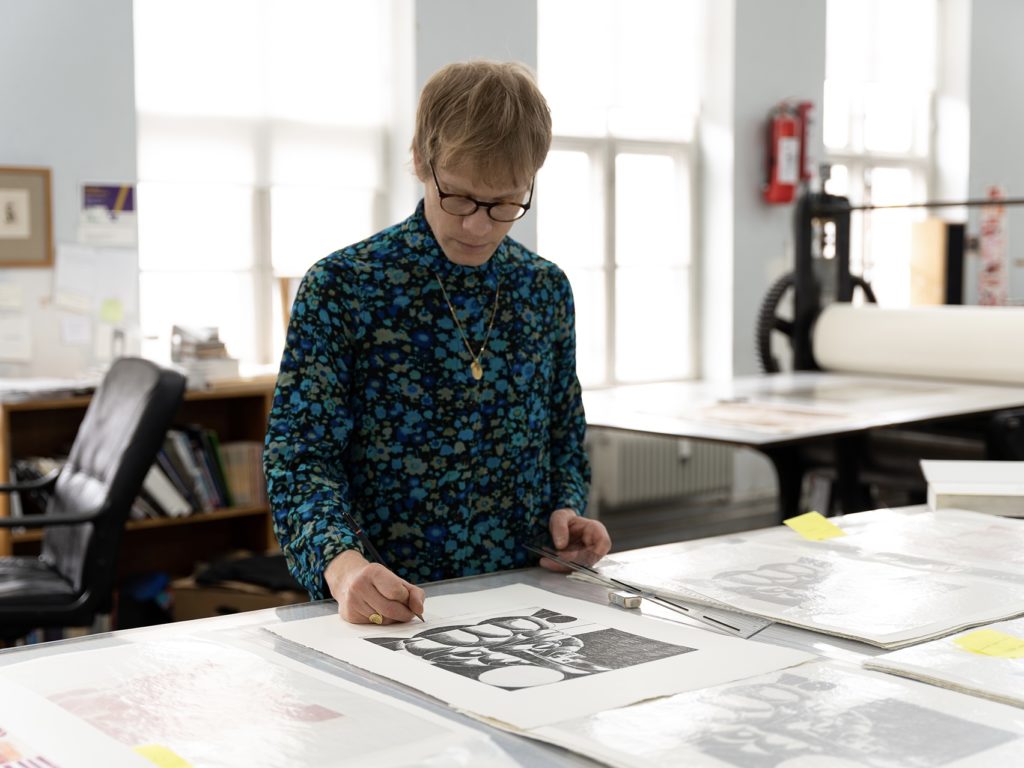
Alexander Tovborg brings forth the underworld of Dante Alighieri’s iconic Divine Comedy in 37 hallucinatory etchings.
Ever since training as an art student, Dante’s Divine Comedy from 1320 has been a close companion of Alexander Tovborg’s artistic practice. This late-medieval poem is considered one of the world’s greatest works of literature, describing the afterlife as a journey of the soul towards God. Exiled from the city of Florence, Dante critiqued the Catholic Church with the Comedy’s graphic descriptions of torment that were used by the clergy to control its faithful followers. This critique of power in the name of religion and the absurdity and ingenuity of Dante’s work has inspired Tovborg, who’s practice mirrors the same ambiguity of both feeling connected to the message of religion and the church, and also being in a position of standing outside looking in. Through religious stories and artifacts, mythologies and symbology, Tovborg explores human identity and power in modern society – just as Dante did in his time. The significance of the Divine Comedy deepened for Alexander Tovborg when he first became the father of Dante, who was named after the great author.
Inspired by William Blake, I wanted to do an illustrated version of the Comedy for my son, Dante, so I started doing illustrations for each canto of Inferno when he was born.
Alexander Tovborg
The Comedy is divided into three books: Inferno, Purgatorio, and Paradiso. Tovborg embarked on the first part of the poem, Inferno, at the time of his son’s arrival in 2016. Inferno is an explicit rendition of the descent into Hell. Described as a voyage through nine downward circles, Dante himself appears as the main character, accompanied by Virgil, the great poet of ancient Rome. Dante was the first to systematically describe the afterlife in Hell like a funnel: the deeper one descended into the pit of Hell, the more serious was one’s crime and the punishment to be meted out.
Tovborg’s portfolio of 37 etchings is inspired by each specific canto (verse) of Inferno and with great inspiration from Yale Professor and ‘Dantista’ Giuseppe Mazzotta’s careful examination of each canto. The hallucinatory nature of descending into Hell is expressed in Tovborg’s psychedelic colors, which are reminiscent of a pre-colonial South American colour palette. The ornamental patterns are simple and sincere expressions that reference the stylized figurative language of the Viking Age, Ancient Greece, pre-Roman and the ornamentation of early Danish coins.

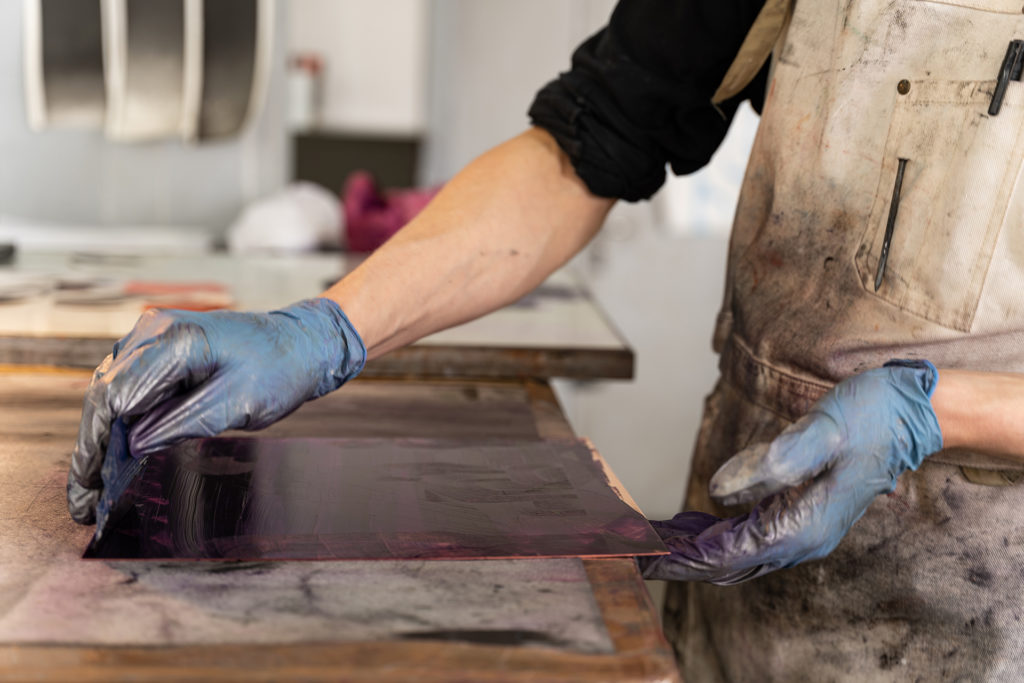
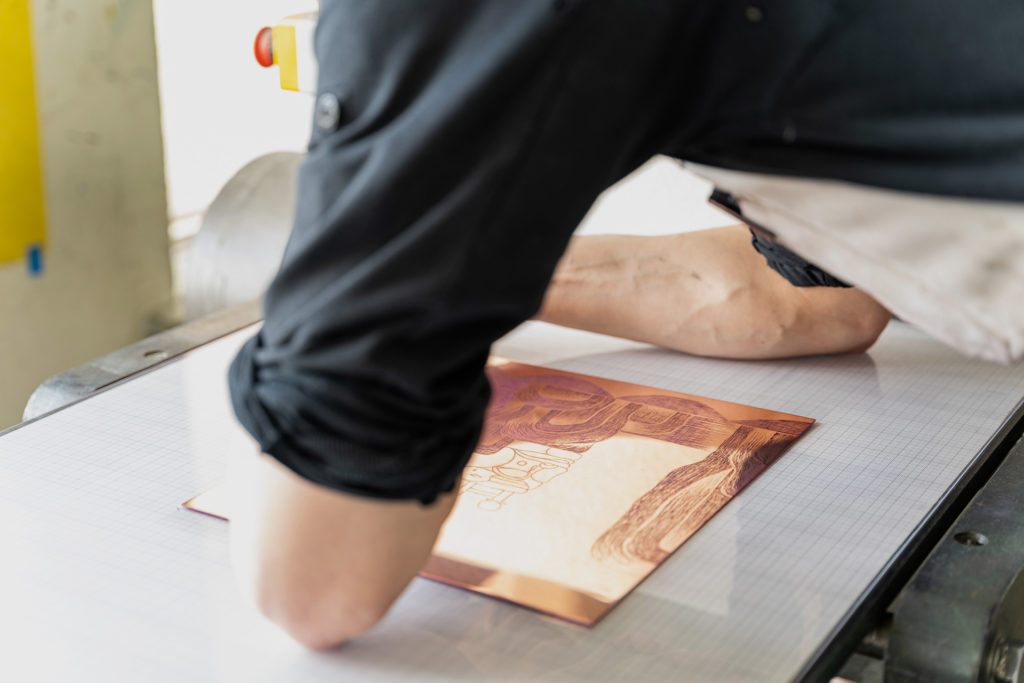

Learn more about Alexander Tovborg
Featured editions
-
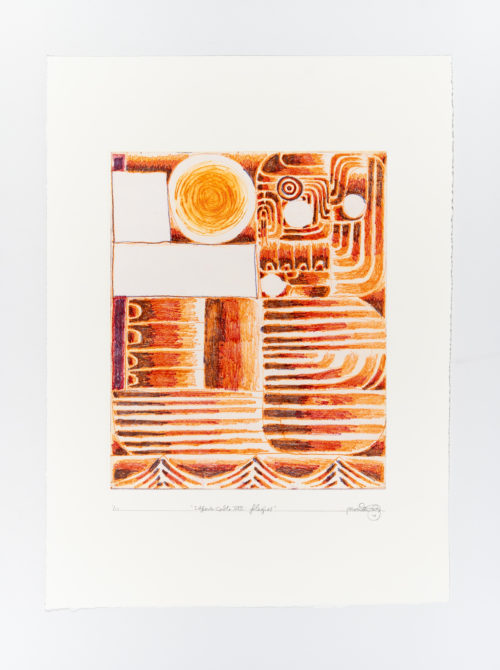
Alexander Tovborg
Inferno Canto VIII: Flegïas, 2017-2018From the portfolio Inferno€577 -
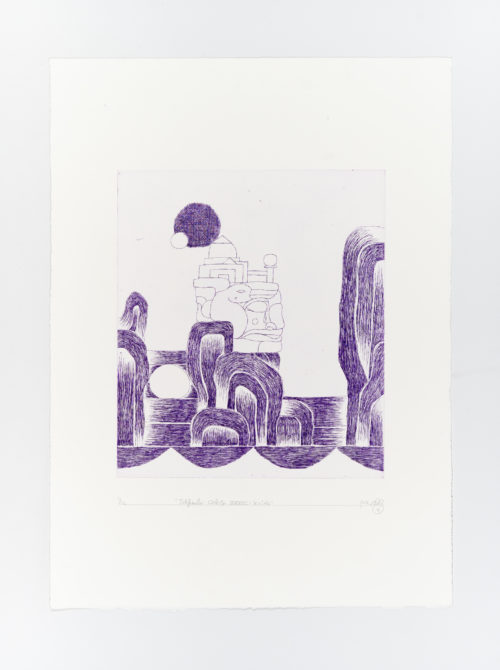
Alexander Tovborg
Inferno Canto XXXII: Kaina, 2017-2018From the portfolio Inferno€577 -
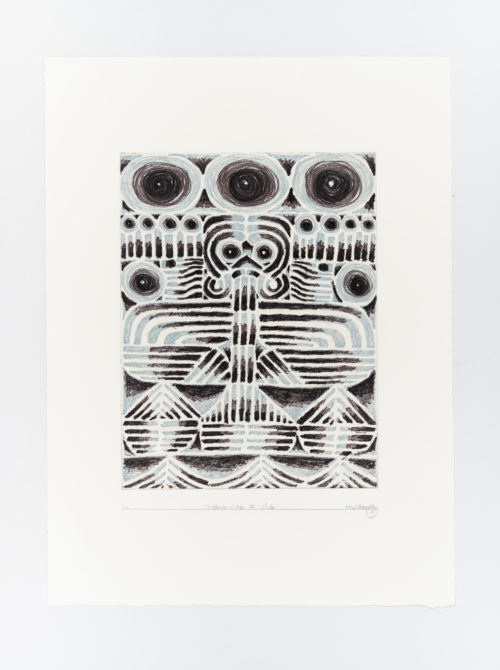
Alexander Tovborg
Inferno Canto VII: Pluto, 2017-2018From the portfolio Inferno€577 -

Alexander Tovborg
Inferno Canto XXIV: thieves, 2017-2018From the portfolio Inferno€577